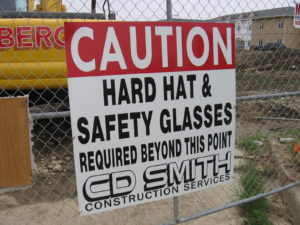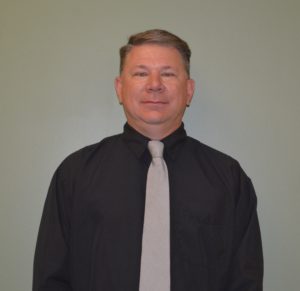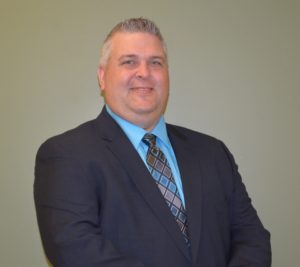President’s Message
An FSCI update from Keith S. Frangiamore, President
Welcoming new clients and staff to Fire Safety Consultants, Inc.
FSCI continues to expand our third party municipal plan review services with new municipal clients. FSCI now has municipal clients in nine states, and has received interest from state and municipal agencies in two additional states.
As our client base grows, we continue to hire quality staff. In May, FSCI completed interviews for two positions: an additional administrative assistant and additional fire protection plan reviewer, resulting in the hiring of two new team members. Phyllis Krage started her FSCI career as an administrative assistant as a field services coordinator in the Illinois office. Hannah Kinney began working as a fire protection consultant also in the Illinois office. She relocated from Tulsa, Oklahoma to work at Fire Safety Consultants, Inc.
Along with our municipal services expansion, Fire Safety Consultants, Inc. has been busy teaching seminars and providing consulting services to a growing number of private clients across the world.
FSCI Vice President Warren Olsen spent a week in Dubai, United Arab Emirates (UAE) presenting fire alarm code training to a large, private fire protection company headquartered in the UAE. Warren endured the long flights and received great reviews for his presentation.
The FSCI consulting division was extremely busy the first half of the year, providing fire safety consulting services to 20th Century Fox for a complex production location in Massachusetts. We also began work on a hazardous materials processing project in Toronto, Canada at the Austrian company’s North American Headquarters.
Concurrently, FSCI is working on two, one-million square foot construction projects in Illinois and Wisconsin; a fire alarm consulting project at a hospital complex in Austin, Texas; and recently completed the first phase of a multi-year fire safety project for the University of Michigan.
Code Officials Included in Job Site Safety
This year’s theme for the International Code Council’s Building Safety Month provided an opportunity to add a twist to the theme “Code Officials Partnering in Community Safety.” This article brings the topic of job site safety into the fold and how we as code officials need to take the lead.
When was the last time you heard a code official entering a job site asked if he or she had their hard hat?
Every inspector or other code enforcement officer has seen tradesmen and women wearing their hard hats, but on many occasions, the inspectors do not. Safety is every professional’s responsibility, and job safety is a team approach. As code enforcement professionals who take pride in following requirements to ensure public safety; we need to set an example.
If a job site has the posting, “You must wear hardhats and safety glasses,” then we all need to abide by the job site rules, no exceptions. Excuses such as, “I’m here to issue the permit,” or “I’m just here to check one item,” does not exempt the code official from job site safety requirements.
Safety is everyone’s concern. So, to help field inspectors set a good example, here is a list of safety equipment they should have:
- Hearing protection
- Respiratory protection
- Hard hat
- Eye protection
- Steel-toe shoes
- Gloves
- Reflective vests
Examples where appropriate personal safety equipment must be worn:
- Prolonged exposure to high decibel levels such as during a fire alarm acceptance test;
- Environments where there is a lot of dust or other pollutants in the air, such as a woodshop inspection;
- A hard hat where work is being performed above the inspector;
- Metal shops or wood shops, where eye protection and respiratory protection is necessary;
- Fire/building collapse scenes where hands and/or feet are vulnerable to injury; such as gloves and steel-toed shoes;
- A reflective safety vest for increased visibility in locations such as warehouses
Ask yourself: Does your department/division have a job site safety standard operating guideline? Does every field inspector receive department-issued safety training and equipment? Most importantly, does the department/division demand every employee adhere to the job site safety SOG?
Private firms can assist your department/division in recommending safety protocols. Consider that other departments may be able to provide you with established standard operating procedures and protocols.
Nobody wants to get a call from OSHA following a job site accident. Our roles as safety professionals include taking the lead by ensuring every employee is equipped with appropriate safety equipment and most importantly, ensuring employees don the safety equipment, as needed.
There are far too many preventable job site accidents, resulting in serious injury and increased insurance costs for local governments.
Job site safety is everyone’s responsibility; something everyone can live with and might have a difficult time living without.
George Michehl, Fire Protection Consultant
Employee Spotlight
Scott Kunzie
Scott Kunzie is one of the three FSCI employees named Scott. He started with us in October 2016 in our Consulting Division and transitioned to the Fire Protection Plan Review Division in January 2017. Scott has over 30 years in the fire service profession, working for both the Woodstock and Schaumburg Fire Departments in Illinois.
in October 2016 in our Consulting Division and transitioned to the Fire Protection Plan Review Division in January 2017. Scott has over 30 years in the fire service profession, working for both the Woodstock and Schaumburg Fire Departments in Illinois.
Scott is married to his wife Coleen and they have two adult children. In his free time, Scott enjoys deer hunting, fishing, and taking road trips on his motorcycle.
Scott McBride
Scott McBride started with us in April of this year as a Plan Reviewer. Scott is one of three FSCI employees with the same first name. Since he has over 30 years of fire protection experience, he has quickly acclimated to his new role. He has been involved in the fire prevention bureau doing company inspections, code complaints, and plan reviews.

Scott has Associates Degrees in both computer Aided Design (CAD) and Fire Science & Safety. Scott currently serves as a Fire Investigator and a part-time Firefighter/Paramedic for both the East Dundee and Hampshire Fire Departments in Illinois.
Scott is married to his wife Natalie and has three children. He is also an Eagle Scout and the Committee Chair for Boy Scouts of America, Troop 18 at St. Thomas More Catholic School in Elgin, IL.
Little Known Facts
NFPA 72 – 2016 Edition
Remote Alarm Indicators Now Required
New in the 2016 edition of NFPA 72, National Fire Alarm and Signaling Code is the requirement for remote alarm or supervisory indicators for all fire detectors in concealed locations. Previously, the provision only applied to smoke detectors.
Section 17.4.7 states, “Where fire detectors are installed in concealed locations more than 10 feet above the finished floor or in arrangements where the detector’s alarm or supervisory indicator is not visible to responding personnel, the detectors shall be provided with remote alarm or supervisory indication in a location acceptable to the authority having jurisdiction.”
It is important to know that Section 17.4.7.3 exempts this requirement where the specific detector alarm or supervisory signal is indicated at an addressable fire alarm control unit. In addition, a map or drawing with the specific location and functions of the detectors must be posted in the area of the main fire alarm control unit.
Remote alarm or supervisory indicators must be installed in accessible areas approved by AHJ and be clearly marked to indicate their function.
George Michehl, Fire Protection Consultant
2015 International Building Code/International Fire Code
Travel Distance Increase for Use Groups F-1 and S-1
An increased exit access travel distance in Use Groups F-1 and S-1 is permitted beyond the 250 feet indicated by IBC/IFC Table 1017.2 in buildings with NFPA 13 sprinkler systems.
Section 1017.2.2 provides the criteria for an increased exit access travel distance to 400 feet when all of the following conditions are met:
1) The F-1 and S-1 portion of the building must not exceed 1-story in height and
2) The minimum height of the building measured from the finished floor to bottom of the ceiling or roof deck/slab is 24-feet and
3) The building is equipped throughout with an NFPA 13 sprinkler system
The travel distance increase is only applicable to portions of the building that are one story in height. This is not intended to preclude a building with a one-story storage warehouse or factory area and a two-story office or a mezzanine from also utilizing this section. The minimum ceiling height is a requirement that is based on fire modeling that allows for the volume of smoke to accumulate at the ceiling during a fire which will provide additional egress time.
Totie Leonardo, Sr. Plan Review Consultant
NFPA 72 – 2016 Edition
Chapter 7 Documentation
Fire alarm and signaling system documentation requirements are consolidated into a new chapter in the 2013 edition of the code. Previously, documentation requirements of a fire alarm and emergency communications system plan submittal were scattered throughout various code chapters and Annex A. The minimum documentation requirements for all systems can be found in Section 7.2 where required by the authority having jurisdiction (AHJ).
Additional documentation may be required by other governing laws, codes, standards, or other sections within NFPA 72. This could include providing design drawings which the AHJ may require for permit review. An example of a documentation requirement found within a chapter of NFPA 72 is located within Chapter 18, Notification Appliances, which requires that ambient sound pressure levels be documented (see Table A.18.4.3 for guidance) as well as the sound pressure levels which the signaling system is intended to produce in all building areas where audible signals must be heard.
Warren Olsen, CFBS, CBO, VP Building & Life Safety
Seminars
Stay up to date on the latest Fire, Building and Life Safety code changes and equipment by attending one of our seminars. FSCI is teaching seminars throughout the United States, led by our experienced staff of Matt Davis, Keith Frangiamore, Brent Gooden, George Michehl & Warren Olsen. Whether you are a Contractor, Architect, Technician, Engineer or an Authority Having Jurisdiction, each seminar is full of practical insights and first-hand experiences to help you comply with applicable codes and standards. FSCI can also provide custom seminars at your location. Be sure to check out our schedule of upcoming seminars on our website. Contact us to learn more by emailing [email protected] or by calling our office at (847) 697-1300.
